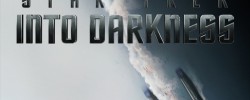TIFF 2013 Review: Dallas Buyers Club (2013)

Cast: Matthew McConaughey, Jennifer Garner, Jared Leto
Director: Jean-Marc Vallée
Country: USA
Genre: Drama
Official Website: Here
Editor’s Notes: The following review is part of our coverage of the 2013 Toronto International Film Festival. For more information on the festival visit http://tiff.net and follow TIFF on Twitter at @TIFF_NET.
After undergoing the most staggering physical transformation since Christian Bale in The Machinist (2004), Matthew McConaughey in Dallas Buyers Club (2013) sports the role of a desperate, well-intentioned reject seeking redemption and freedom in an all too aggrandizing system of government—one wherein the pharmaceutical capitalists unjustifiably dictate the fate of those already facing death. Vallee’s film, based on the real experiences of Ron Woodroof (Matthew McConaughey), a rodeo junkie turned AIDS mogul and subsequent victim, depicts great perseverance in times of ultimate desperation. Told that he ought to already be dead, and will otherwise succumb to the disease within thirty days, Woodruff does whatever he can to make sure that he controls his own fate. Not taking the doctors’ advice, he seeks the unapproved medication demonstrated to help those diagnosed with HIV. Recognizing the beneficial effects and lucrative opportunity of sharing these vitamins and proteins with others affected with the disease, Woodruff does whatever he can to not only protect his own life but others like him. To give hope to those suffering from an incurable ailment is a heroic gesture which Woodruff takes upon himself. While originally acting on selfish ideals to capitalize—just like the drug pushing pharmaceutical companies he fights against—Woodruff survives for an astonishing number of years despite his indulgent lifestyle and chronic medical condition, Ron Woodruff’s courageous actions in face of the overlooking agenda of an illogical legal system—if you’re dying, what difference does it make what you put in your body—turns him into a martyr for freedom and a voice for human worth.
After undergoing the most staggering physical transformation since Christian Bale in The Machinist (2004), Matthew McConaughey in Dallas Buyers Club (2013) sports the role of a desperate, well-intentioned reject seeking redemption…
 Using several documentary filmmaking techniques, particularly hand camera movement, and several fictional filmmaking techniques, particularly selective focus, Dallas Buyers Club gives the sense both of a documentary and narrative realism. While condensed storytelling through montage is often used, and moments of the story are therefore elided, Vallee ensures to give as honest a depiction of Ron Woodruff’s actions as possible. The film is consequently quite narratively driven but retains the spontaneity of an indifferent and wholly expressive document.
Using several documentary filmmaking techniques, particularly hand camera movement, and several fictional filmmaking techniques, particularly selective focus, Dallas Buyers Club gives the sense both of a documentary and narrative realism. While condensed storytelling through montage is often used, and moments of the story are therefore elided, Vallee ensures to give as honest a depiction of Ron Woodruff’s actions as possible. The film is consequently quite narratively driven but retains the spontaneity of an indifferent and wholly expressive document.
Delivering his quick and clever retorts with unwavering self-affirmation, Woodruff ensnares those around him and heroically saves himself and others in his unrelenting quest to fight the powers that be. Complementing his originally homophobic nature is Jared Leto as a sassy transgendered person suffering from the same disease; they consequently develop a strong bond. It certainly helps that Jared Leto is surprisingly convincing in the role, and gives one of the better performances of his career. The character development of both parties is exceptional, and their on-screen chemistry is hard to deny. The way in which they shape each other’s lives, and by extension those around them, illustrates what one is capable of when fighting for one’s death. It moreover expresses how one’s perspective of life might change when the prospect of death becomes an unignorable aspect of one’s life.
That said, while the editing, soundtrack, and general filmmaking is strong and services the plot, these elements are not contextually driven and therefore don’t make quite as strong an impression as the fascinating story that unfolds.
That said, while the editing, soundtrack, and general filmmaking is strong and services the plot, these elements are not contextually driven and therefore don’t make quite as strong an impression as the fascinating story that unfolds. However, in the end, the film pleasantly comes full circle by showing Ron, alive and well, doing what he loves: bull riding. The image that commences the film is reinstated with a slightly augmented framing device and slow motion photography to illustrate how Ron simply would not allow the disease to stop him. He fought back, lived for years, and conquered the legal system just as he conquered any bull that tried to throw him off. In the final freeze frame of Ron hanging to keep on the bull, one sees a metaphorical expression of how Ron spent much of his life teetering the edge of death, and more often than not came out on top.
Related Posts
![]()
Kamran Ahmed
![]()
Latest posts by Kamran Ahmed (see all)
































